The loveFOOD guide to... bread
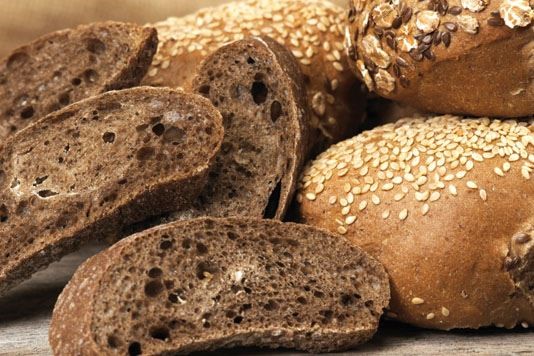
Do you know how sourdough is made? Or what rye bread tastes like? Brush up on bread with our handy guide.
Baguette
 We’ll start simple. A baguette (meaning ‘small rod’, in French) is a long, narrow loaf with a golden brown crust, and a soft, fluffy inside. It’s not as slender as French ‘bâton’ or ‘ficelle’ bread, the latter of which is the thinnest on the market.
We’ll start simple. A baguette (meaning ‘small rod’, in French) is a long, narrow loaf with a golden brown crust, and a soft, fluffy inside. It’s not as slender as French ‘bâton’ or ‘ficelle’ bread, the latter of which is the thinnest on the market.
It was actually developed in Vienna first, in the mid-19th century, when the first steam ovens made the crisp crust possible. Baguettes are best eaten with butter and French cheese, although the Vietnamese make their own baguettes for ‘Bánh mì’ sandwiches, which come filled with pickled carrots, daikon, onions, and meat or tofu.
Fougasse
 Fougasse is a type of raised flatbread typically associated with the Provence. The recipe and flavour is similar to focaccia, but the top is slashed before baking to make it wider. The Provence version is more likely to have additions in the form of olives, cheese or anchovies, and so could be considered a primitive form of pizza without the tomato.
Fougasse is a type of raised flatbread typically associated with the Provence. The recipe and flavour is similar to focaccia, but the top is slashed before baking to make it wider. The Provence version is more likely to have additions in the form of olives, cheese or anchovies, and so could be considered a primitive form of pizza without the tomato.
Dosa
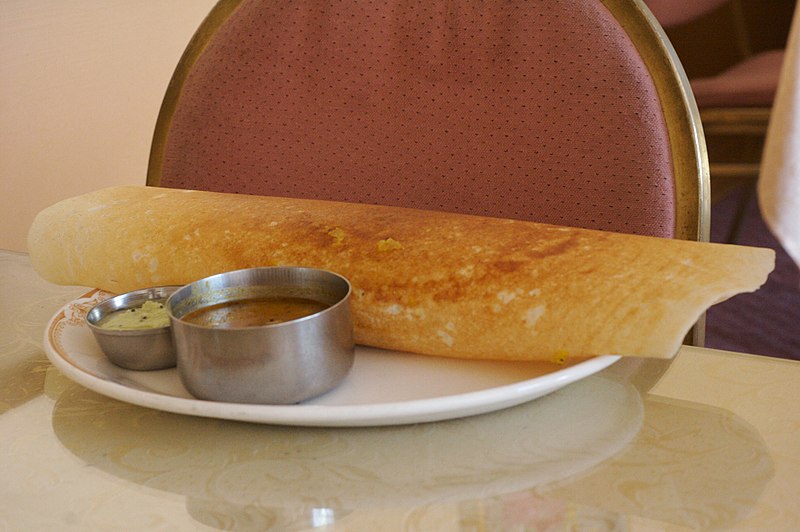 A flatbread originating from Southern India, which is similar to a crepe and can be stuffed with a variety of fillings. The classic ‘masala dosa’ is filled with spiced potatoes, onions and cashews. It is made from rice batter and black lentils, and it’s popularity extends to Sri Lanka, Malaysia, and Singapore.
A flatbread originating from Southern India, which is similar to a crepe and can be stuffed with a variety of fillings. The classic ‘masala dosa’ is filled with spiced potatoes, onions and cashews. It is made from rice batter and black lentils, and it’s popularity extends to Sri Lanka, Malaysia, and Singapore.
Boule
 Meaning ‘ball’ in French, a boule is a round, crusty French loaf which, in the UK at least, might also be called a ‘cob’. It can be made with any type of flour and can be leavened with commercial yeast, chemical leavening, or even wild yeast sourdough. It can be formed from just about any dough, but seems to work best with dough under 67% hydration.
Meaning ‘ball’ in French, a boule is a round, crusty French loaf which, in the UK at least, might also be called a ‘cob’. It can be made with any type of flour and can be leavened with commercial yeast, chemical leavening, or even wild yeast sourdough. It can be formed from just about any dough, but seems to work best with dough under 67% hydration.
Lavash
An Armenian flatbread made from wheat flour, water, and salt. Traditionally it is rolled out flat and slapped against the hot walls of a clay oven. It sometimes comes topped with toasted sesame seeds, poppy seeds, garlic and other seasonings, although more usually it is made fresh and used like a tortilla wrap, for kebabs and other foods.
It’s soft and thin and, when left out, hardens to a cracker consistency, which some people prefer. Indeed, in Armenian villages, the dried lavash is stacked high in layers to be eaten later – when the time comes, it is sprinkled with water to make it softer.
Rye bread
 Bread made from rye flour, which is high in fibre and denser than wheat bread. It’s usually formed from a sourdough starter and may be baked with caraway seeds for additional flavour. Rye bread has many health benefits – it’s high in fibre and contains only a little fat – and doesn’t create high spikes in blood sugar like white bread does.
Bread made from rye flour, which is high in fibre and denser than wheat bread. It’s usually formed from a sourdough starter and may be baked with caraway seeds for additional flavour. Rye bread has many health benefits – it’s high in fibre and contains only a little fat – and doesn’t create high spikes in blood sugar like white bread does.
There are light and dark rye breads, depending on the flour (which is classified according to the level of extraction of fibre) and added ingredients, such as molasses for flavour or caramel for colour. Artisan loaves can include ground spices such as anise, coriander and fennel.
Pumpernickel
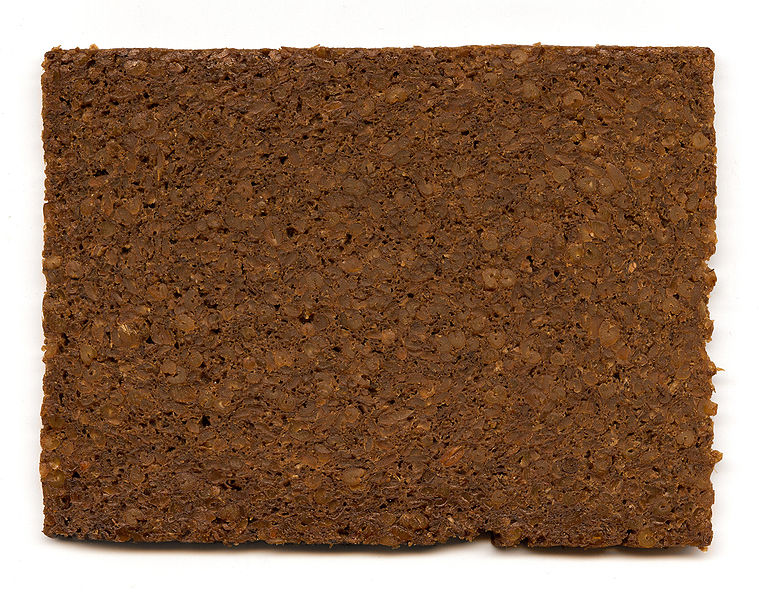 A type of dark, slightly sweet, dense rye bread, made from crushed or ground rye grains. Sometimes it can be nearly black in colour, and like most rye breads it’s made with a sourdough starter. It’s baked for a long period at low temperatures in a covered tin, and there are many different types of pumpernickel – especially in Germany, and the Westphalia region.
A type of dark, slightly sweet, dense rye bread, made from crushed or ground rye grains. Sometimes it can be nearly black in colour, and like most rye breads it’s made with a sourdough starter. It’s baked for a long period at low temperatures in a covered tin, and there are many different types of pumpernickel – especially in Germany, and the Westphalia region.
Soda bread
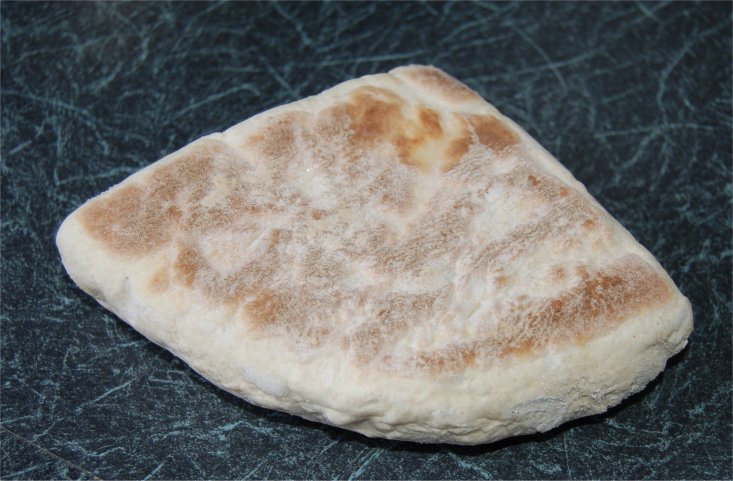 Soda bread is a chemically-leavened quick bread made with baking soda instead of yeast, to produce a lighter, airier crumb. The traditional ingredients are flour, baking soda, salt and buttermilk, although it is often made sweet with raisins and nuts, or a hint of spice. It’s a quick bread to make, and the buttermilk in the dough contains lactic acid, which reacts with the baking soda to form tiny bubbles of carbon dioxide.
Soda bread is a chemically-leavened quick bread made with baking soda instead of yeast, to produce a lighter, airier crumb. The traditional ingredients are flour, baking soda, salt and buttermilk, although it is often made sweet with raisins and nuts, or a hint of spice. It’s a quick bread to make, and the buttermilk in the dough contains lactic acid, which reacts with the baking soda to form tiny bubbles of carbon dioxide.
It dates back to 1840ish, when bicarbonate of soda was introduced to Ireland. The bicarbonate reacted better with the soft wheat grown in the Irish climate, and replaced yeast as the leavening agent.
Sourdough
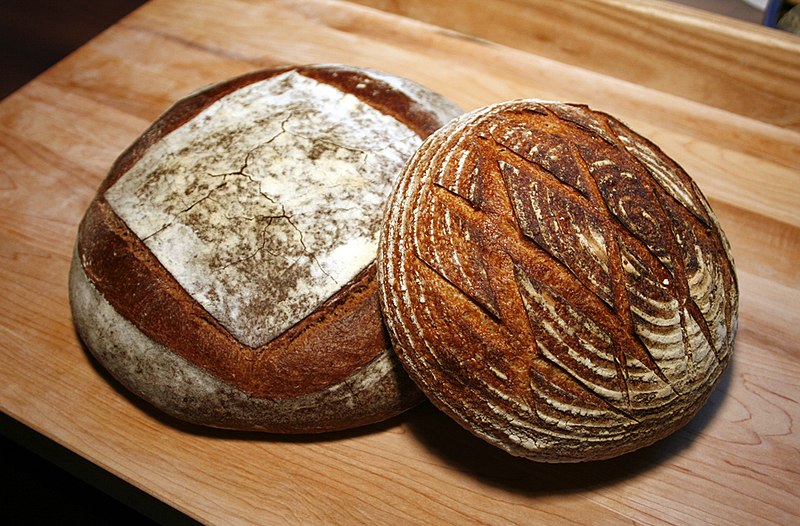 More a method than a type of bread, which involves using lactic acid-producing bacteria (‘lactobacillus’) that gives a characteristic sour taste and aroma. The sour taste comes from the lactobacillus, which lives in symbiosis with the yeast, feeding on the by-products of the yeast fermentation.
More a method than a type of bread, which involves using lactic acid-producing bacteria (‘lactobacillus’) that gives a characteristic sour taste and aroma. The sour taste comes from the lactobacillus, which lives in symbiosis with the yeast, feeding on the by-products of the yeast fermentation.
The preparation of sourdough begins with a pre-ferment (the ‘starter’) made of flour and water. The purpose of the starter is to produce a vigorous leaven and to develop the flavour of the bread.
Sourdough probably originated in Ancient Egyptian times and was the first form of leavening used by bakers. Sourdough remained the usual form of leavening down into the European Middle Ages, until being replaced by barm from the beer brewing process, and then later purpose-cultured yeast.
Wholegrain
 A wholegrain loaf can be made from any kind of whole grain (that’s the bran, the endosperm, and the germ), or a mixture of several. Those whole grains that are baked into bread include corn, flaxseed, hemp, oats, rye, spelt and whole wheat. It’s different to ‘multigrain’ breads, which most likely contain a variety of refined grains that are not whole grains.
A wholegrain loaf can be made from any kind of whole grain (that’s the bran, the endosperm, and the germ), or a mixture of several. Those whole grains that are baked into bread include corn, flaxseed, hemp, oats, rye, spelt and whole wheat. It’s different to ‘multigrain’ breads, which most likely contain a variety of refined grains that are not whole grains.
Whole grains contain all parts of the grain kernel, but normal white bread is made with refined grains… that means it has had all the fibre-dense bran and the nutrient-rich germ processed out, leaving only the starchy endosperm. Therefore it does not have the essential fatty acids, Vitamin E, magnesium and zinc that wholegrain bread has.
This is a classic lovefood article
Baguette image courtesy of Amarant; Fougasse from Fast Food Fougasse; Dousa from Roland; Boule from Zantastik; Rye and Pumpernickel from Rainer Zenz; soda bread from Canterbury Tail
The four best places to buy bread
The history of maslin, the original rustic bread
The expert's guide to bread making
Comments
Do you want to comment on this article? You need to be signed in for this feature